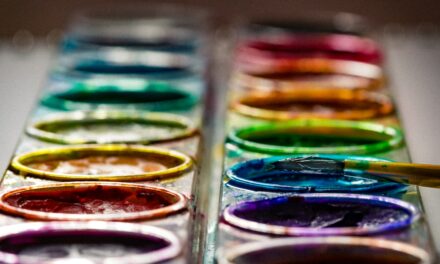Artist grants are a vital resource for creative individuals seeking financial support to pursue their artistic endeavours. These grants can provide funding for a variety of projects, including exhibitions, research, and the development of new works. Understanding the nature of these grants is essential for artists who wish to leverage them effectively.
Unlike loans, grants do not require repayment, making them an attractive option for those in the arts. However, they often come with specific eligibility criteria and application processes that can be daunting for newcomers. It is important to recognise that artist grants can vary significantly in terms of their purpose and scope.
Some grants are designed to support emerging artists, while others may focus on established practitioners or specific disciplines such as visual arts, music, or literature. Additionally, grants may be awarded for particular projects or for general support of an artist’s practice. Familiarising oneself with the different types of grants available is crucial for identifying the right opportunities that align with one’s artistic vision and career goals.
Summary
- Artist grants are financial awards given to artists to support their creative projects and professional development.
- Research funding opportunities through arts councils, government agencies, and private foundations and trusts.
- When applying for artist grants, make sure to carefully read and follow the application guidelines and provide a strong proposal.
- Government funding for artists can be accessed through arts councils, cultural departments, and specific grant programs.
- Private foundations and trusts offer funding resources for artists through grants, scholarships, and fellowships.
- Utilize online crowdfunding platforms to raise funds for artistic projects and connect with a wider audience.
- Artist residencies provide opportunities for creative development and often come with financial support through grants and stipends.
- When navigating artist grants, avoid common mistakes such as missing deadlines, not providing a clear project proposal, and not following application instructions.
Researching Funding Opportunities: Where to Look
When it comes to finding suitable funding opportunities, thorough research is paramount. Artists should begin by exploring local, national, and international organisations that offer grants tailored to their specific needs. Many arts councils and cultural institutions maintain comprehensive databases of available grants, which can serve as a valuable starting point.
Websites dedicated to the arts often feature listings of current funding opportunities, along with detailed descriptions of eligibility requirements and application deadlines. In addition to traditional funding sources, artists should also consider alternative avenues such as community organisations, non-profits, and even corporate sponsorships. Networking within the artistic community can yield insights into lesser-known grants and funding opportunities that may not be widely advertised.
Engaging with fellow artists, attending workshops, and participating in art fairs can help build connections that lead to potential funding sources. Social media platforms can also be a useful tool for discovering new opportunities and staying informed about upcoming grants.
Applying for Artist Grants: Tips for a Successful Application
Crafting a compelling grant application is an art in itself. To increase the chances of success, artists should begin by carefully reading the guidelines provided by the funding organisation. Each grant may have specific requirements regarding project proposals, budgets, and supporting materials.
A well-structured application typically includes a clear project description that outlines the artistic vision, objectives, and intended outcomes. Artists should articulate how their project contributes to the broader cultural landscape and why it deserves funding.
Additionally, including a detailed budget that transparently outlines how funds will be allocated can strengthen an application. It is also beneficial to provide samples of previous work that demonstrate the artist’s capabilities and commitment to their practice. Ultimately, a successful application should convey passion and professionalism while clearly communicating the significance of the proposed project.
Government Funding for Artists: How to Access Support
Government funding plays a crucial role in supporting artists across various disciplines. Many countries have established arts councils or government agencies dedicated to promoting and funding the arts. These organisations often provide grants specifically aimed at fostering creativity and cultural development within communities.
Accessing government funding typically involves navigating a structured application process that may include multiple stages of review. To successfully access government support, artists should familiarise themselves with the specific programmes available in their region. This may involve attending informational sessions or workshops hosted by arts councils, which can provide valuable insights into the application process and criteria for selection.
Additionally, artists should keep abreast of any changes in funding policies or priorities that may affect their eligibility. By understanding the landscape of government funding and aligning their projects with the goals of these agencies, artists can enhance their chances of securing financial support.
Private Foundations and Trusts: Funding Resources for Artists
In addition to government funding, private foundations and trusts represent another significant source of financial support for artists. These organisations often have specific missions or areas of focus, such as supporting underrepresented artists or promoting innovative artistic practices. Researching private foundations that align with one’s artistic vision can uncover valuable opportunities for funding.
Applying for grants from private foundations typically requires a tailored approach. Artists should carefully review each foundation’s guidelines and mission statement to ensure their project aligns with the foundation’s goals. Crafting a narrative that connects the artist’s work with the foundation’s mission can significantly enhance the likelihood of receiving support.
Furthermore, many private foundations value collaboration; therefore, artists may consider partnering with other creatives or organisations to strengthen their applications and broaden their impact.
Crowdfunding and Artist Grants: Utilizing Online Platforms
The Key to a Successful Crowdfunding Campaign
To successfully utilise crowdfunding platforms, artists should create engaging campaigns that clearly communicate their project’s goals and significance. High-quality visuals and compelling narratives are essential in capturing the attention of potential backers. Additionally, offering rewards or incentives for different levels of support can encourage contributions and create a sense of investment among supporters.
The Importance of Planning and Marketing
While crowdfunding can be an effective way to secure funding, it requires careful planning and marketing efforts to reach a wider audience. Artists must be prepared to dedicate time and resources to promoting their campaign and engaging with potential supporters.
Reaping the Rewards of Crowdfunding
By utilising crowdfunding platforms effectively, artists can not only secure the financial backing they need but also build a loyal community of supporters who are invested in their work. This can lead to a more sustainable and fulfilling creative career.
Artist Residencies and Grants: Opportunities for Creative Development
Artist residencies often provide not only a space for creation but also financial support through grants associated with the residency programme. These opportunities allow artists to immerse themselves in a new environment, engage with other creatives, and focus on their work without the distractions of daily life. Many residencies offer stipends or grants that cover living expenses during the residency period, making them an attractive option for artists seeking both financial assistance and professional development.
Applying for artist residencies typically involves submitting a portfolio of work along with a proposal outlining what the artist hopes to achieve during their time at the residency. It is essential for applicants to convey how the residency aligns with their artistic practice and how it will contribute to their growth as an artist. Additionally, many residencies encourage collaboration and community engagement; therefore, demonstrating an openness to sharing one’s work with others can enhance an application’s appeal.
Navigating Artist Grants: Common Mistakes to Avoid
While applying for artist grants can be a rewarding endeavour, there are common pitfalls that many applicants encounter along the way. One frequent mistake is failing to thoroughly read and understand the grant guidelines before submitting an application. Each grant has its own set of requirements; overlooking even minor details can lead to disqualification or rejection.
Another common error is submitting generic applications that do not adequately address the specific goals or priorities of the funding organisation. Tailoring each application to reflect an understanding of the grantor’s mission is crucial for standing out among numerous applicants. Additionally, procrastination can lead to rushed applications that lack clarity or depth; starting early allows artists ample time to refine their proposals and seek feedback from peers or mentors.
In conclusion, navigating the world of artist grants requires diligence, research, and strategic planning. By understanding the various types of funding available, conducting thorough research on opportunities, crafting compelling applications, and avoiding common mistakes, artists can enhance their chances of securing financial support for their creative projects. Whether through government funding, private foundations, crowdfunding platforms, or artist residencies, there are numerous avenues available for artists to explore as they seek to bring their artistic visions to life.
If you are interested in exploring contemporary art in Rome, you should definitely check out the Museo d’Arte Contemporanea di Roma MACRO. This museum offers a unique insight into the vibrant art scene of the city. For those looking to connect with other artists and crafters, The Crafty Collective is a great resource. They provide a supportive community for creatives to share ideas and collaborate on projects. And if you want to delve into the power of imagination in art, be sure to read the article on Imagination in Art. It explores how artists use their creativity to push boundaries and create innovative works. Click here to learn more about these exciting art resources.
FAQs
What are artist grants and funding resources?
Artist grants and funding resources are financial support opportunities available to artists and creative individuals to help them pursue their artistic projects and career development. These resources can come in the form of grants, fellowships, residencies, scholarships, and other financial assistance.
Where can artists find grants and funding resources?
Artists can find grants and funding resources through various sources such as government arts councils, private foundations, non-profit organizations, and arts institutions. There are also online platforms and databases that compile and list available funding opportunities for artists.
What types of projects are eligible for artist grants and funding?
Artist grants and funding resources are typically available for a wide range of artistic projects and disciplines including visual arts, performing arts, literary arts, film and media, music, and interdisciplinary arts. Eligibility criteria may vary depending on the specific funding opportunity.
How can artists apply for grants and funding resources?
To apply for artist grants and funding resources, artists typically need to submit an application that includes a project proposal, a portfolio of their work, a budget, and other supporting materials. The application process may also involve writing a personal statement, providing references, and attending interviews or presentations.
What are some tips for artists applying for grants and funding?
Some tips for artists applying for grants and funding resources include thoroughly researching the funding opportunity, carefully following the application guidelines, presenting a clear and compelling project proposal, and demonstrating the impact and feasibility of the proposed project. It is also important to meet application deadlines and to seek feedback on the application if possible.


